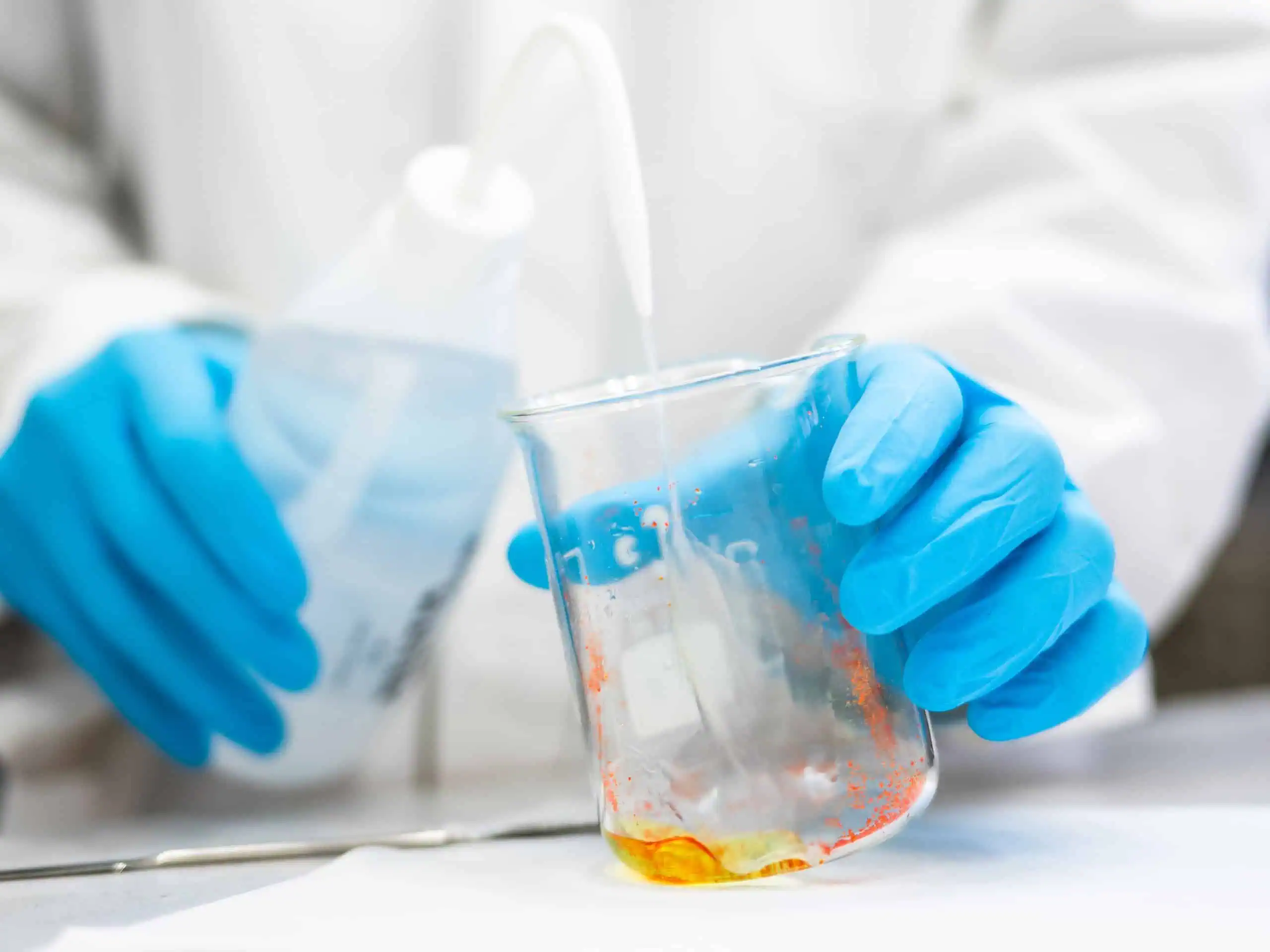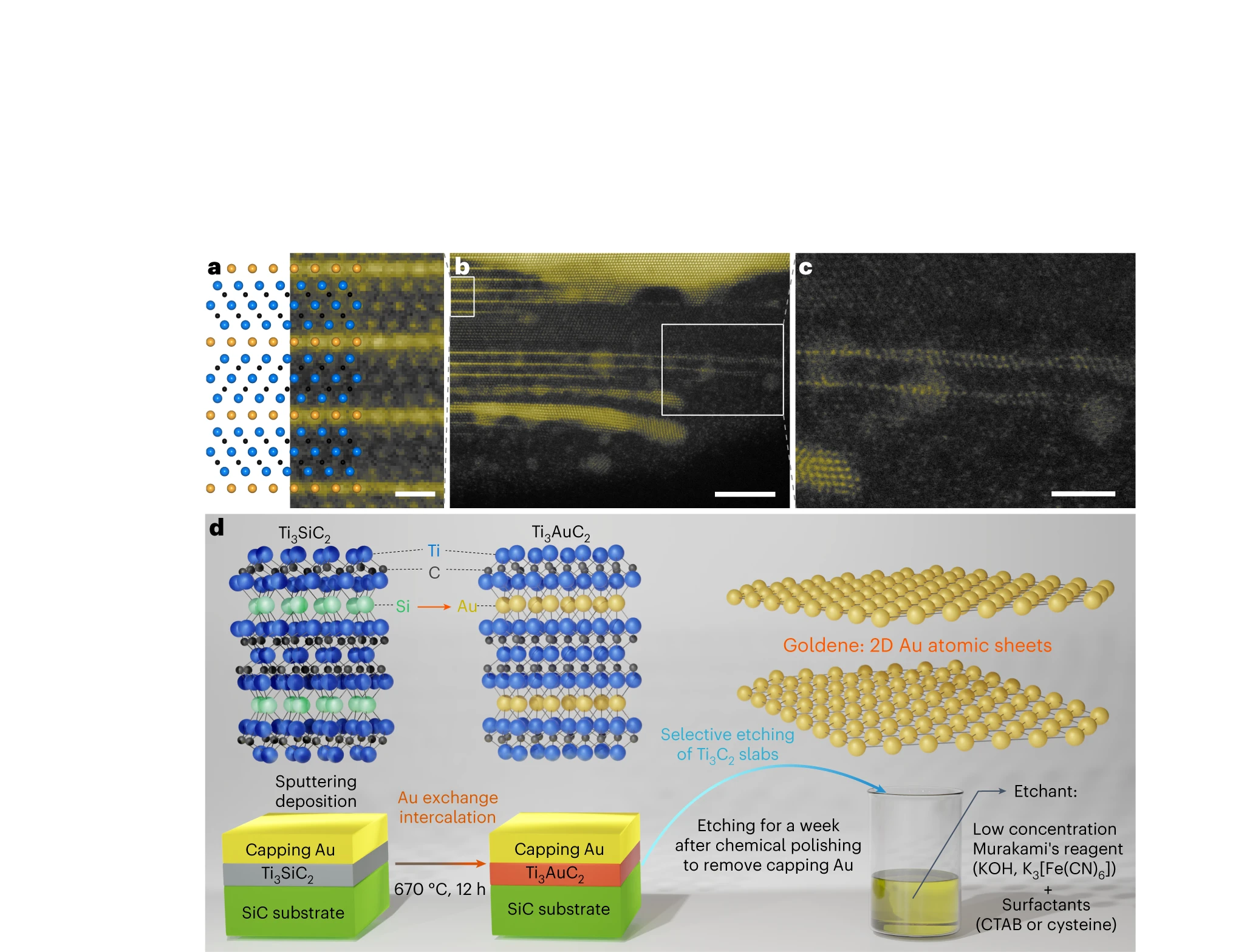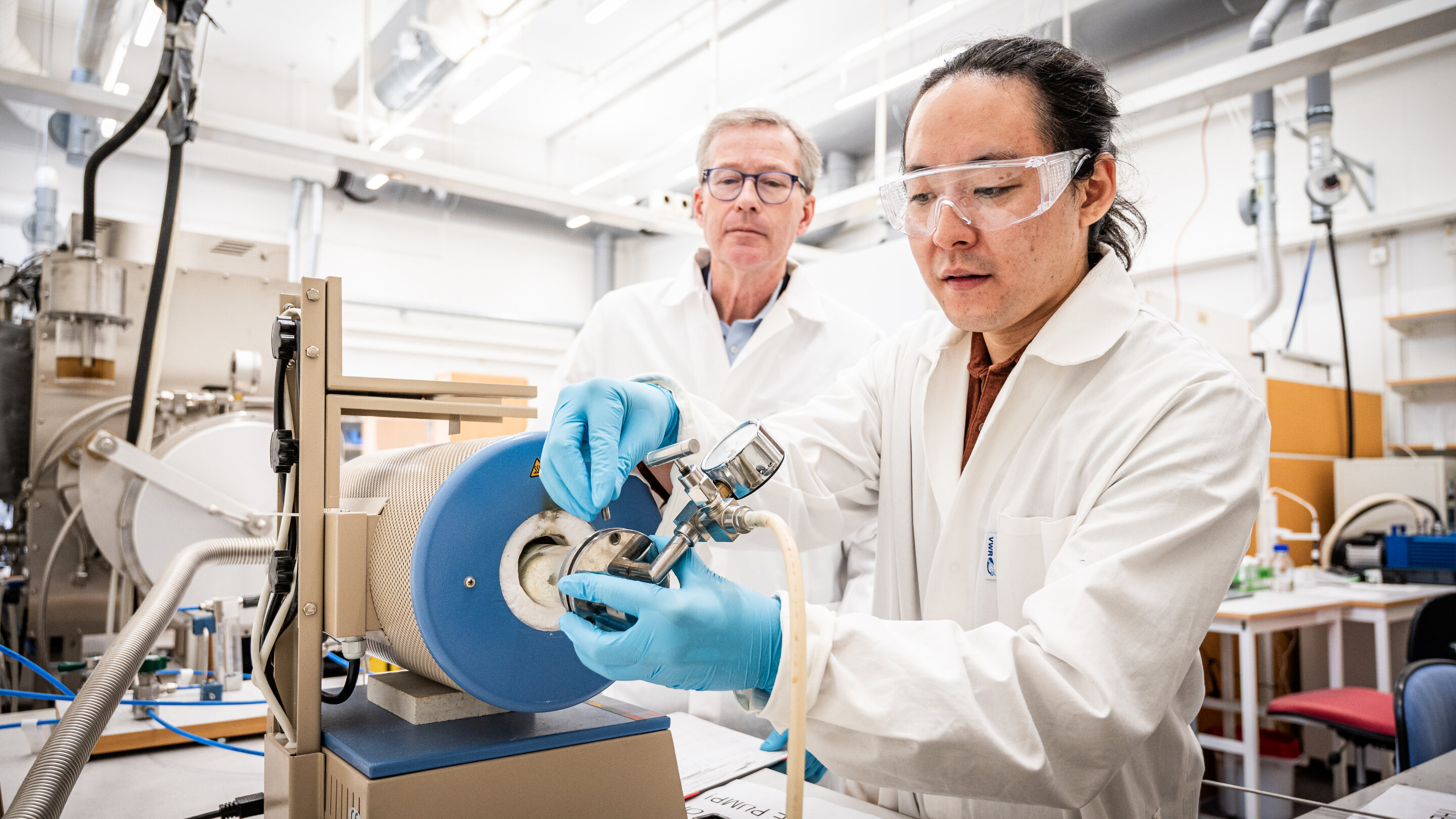
For the first time, scientists have managed to create sheets of gold only a single atom layer thick. The material has been termed goldene. According to researchers from Linköping University, Sweden, this has given the gold new properties that can make it suitable for use in applications such as carbon dioxide conversion, hydrogen production, and production of value-added chemicals. Their findings are published in the journal Nature Synthesis.
Scientists have long tried to make single-atom-thick sheets of gold but failed because the metal's tendency to lump together. But researchers from Linköping University have now succeeded thanks to a hundred-year-old method used by Japanese smiths.
"If you make a material extremely thin, something extraordinary happens—as with graphene. The same thing happens with gold. As you know, gold is usually a metal, but if single-atom-layer thick, the gold can become a semiconductor instead," says Shun Kashiwaya, researcher at the Materials Design Division at Linköping University.
To create goldene, the researchers used a three-dimensional base material where gold is embedded between layers of titanium and carbon. But coming up with goldene proved to be a challenge. According to Lars Hultman, professor of thin film physics at Linköping University, part of the progress is due to serendipity.
"We had created the base material with completely different applications in mind. We started with an electrically conductive ceramics called titanium silicon carbide, where silicon is in thin layers. Then the idea was to coat the material with gold to make a contact. But when we exposed the component to high temperature, the silicon layer was replaced by gold inside the base material," says Lars Hultman.

(a, Schematic atomic positions corresponding to a square in b, and HR-STEM image of Ti3AuC2 along with [1120] orientation marked in b. Yellow, blue and black balls represent Au, Ti and C atoms, respectively. Scale bar, 5 Å. b, Cross-sectional HR-STEM image of Ti3AuC2, after etching by Murakami's reagent with CTAB, where the original Ti3AuC2 structure remains at the left side and goldene appears at the right side of the etching frontline. Scale bar, 5 nm. c, Zoomed-in partly twisted goldene after etching away Ti3C2 slabs marked in b. Scale bar, 2 nm. d, Schematic illustration of the preparation of goldene.)
This phenomenon is called intercalation and what the researchers had discovered was titanium gold carbide. For several years, the researchers have had titanium gold carbide without knowing how the gold can be exfoliated or panned out, so to speak.
By chance, Lars Hultman found a method that has been used in Japanese forging art for over a hundred years. It is called Murakami's reagent, which etches away carbon residue and changes the color of steel in knife making, for example. But it was not possible to use the exact same recipe as the smiths did. Kashiwaya had to look at modifications.
"I tried different concentrations of Murakami's reagent and different time spans for etching. One day, one week, one month, several months. What we noticed was that the lower the concentration and the longer the etching process, the better. But it still wasn't enough," he says.
The etching must also be carried out in the dark as cyanide develops in the reaction when it is struck by light, and it dissolves gold. The last step was to get the gold sheets stable. To prevent the exposed two-dimensional sheets from curling up, a surfactant was added. In this case, a long molecule that separates and stabilizes the sheets, i.e. a tenside.
"The goldene sheets are in a solution, a bit like cornflakes in milk. Using a type of 'sieve,' we can collect the gold and examine it using an electron microscope to confirm that we have succeeded. Which we have," says Kashiwaya.
The new properties of goldene are due to the fact that the gold has two free bonds when two-dimensional. Thanks to this, future applications could include carbon dioxide conversion, hydrogen-generating catalysis, selective production of value-added chemicals, hydrogen production, water purification, communication, and much more. Moreover, the amount of gold used in applications today can be much reduced.
The next step for the LiU researchers is to investigate whether it is possible to do the same with other noble metals and identify additional future applications.

A single atom layer of gold—researchers create goldene
For the first time, scientists have managed to create sheets of gold only a single atom layer thick. The material has been termed goldene. According to researchers from Linköping University, Sweden, this has given the gold new properties that can make it suitable for use in applications such as...
Study:

Synthesis of goldene comprising single-atom layer gold - Nature Synthesis
Atomically thin gold nanosheets are predicted to have interesting properties but their synthesis is challenging. Here the exfoliation of two-dimensional single-atom-thick gold, termed goldene, is achieved through wet-chemically etching Ti3C2 from Ti3AuC2. The synthesized goldene has promising...
Abstract:
The synthesis of monolayer gold has so far been limited to free-standing several-atoms-thick layers, or monolayers confined on or inside templates. Here we report the exfoliation of single-atom-thick gold achieved through wet-chemically etching away Ti3C2 from nanolaminated Ti3AuC2, initially formed by substituting Si in Ti3SiC2 with Au. Ti3SiC2 is a renown MAX phase, where M is a transition metal, A is a group A element, and X is C or N. Our developed synthetic route is by a facile, scalable and hydrofluoric acid-free method. The two-dimensional layers are termed goldene. Goldene layers with roughly 9% lattice contraction compared to bulk gold are observed by electron microscopy. While ab initio molecular dynamics simulations show that two-dimensional goldene is inherently stable, experiments show some curling and agglomeration, which can be mitigated by surfactants. X-ray photoelectron spectroscopy reveals an Au 4f binding energy increase of 0.88 eV. Prospects for preparing goldene from other non-van der Waals Au-intercalated phases, including developing etching schemes, are presented.



